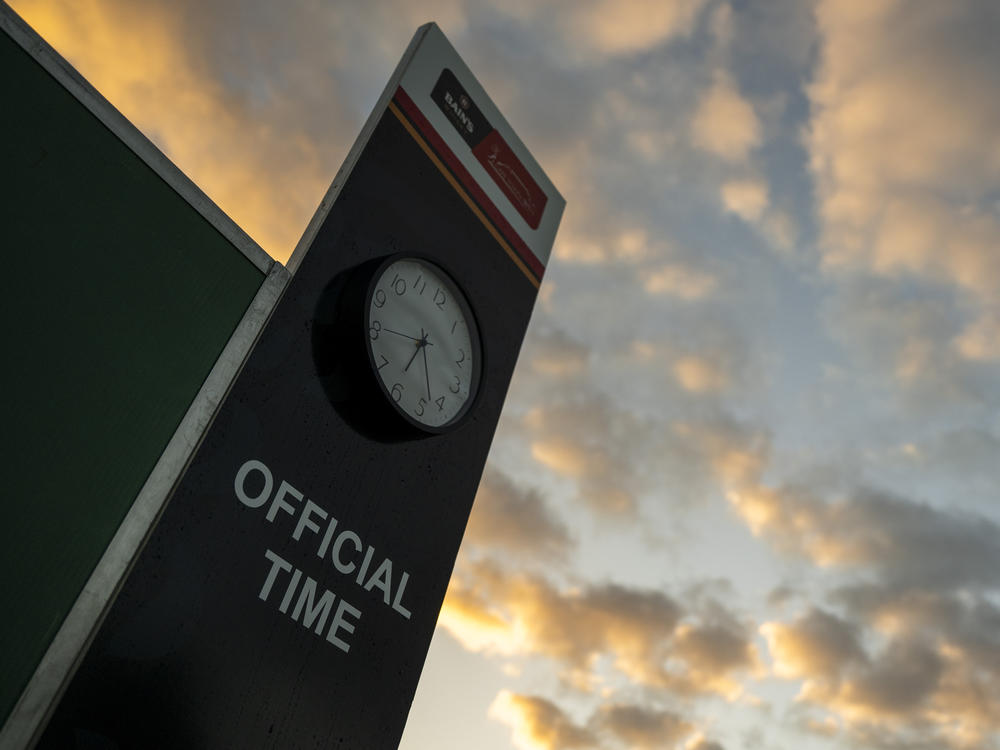Section Branding
Header Content
Negative leap second: Climate change delays unusual step for time standard
Primary Content
Climate change has been blamed for many dramatic effects on our planet and our lives. Now it may even affect the measurement of time.
You've probably heard of "leap seconds" — the sliver of time scientists occasionally add to the world's official time standard to resolve a divergence between old-fashioned time-telling and modern atomic clocks.
But we're nearing a year when a negative leap second could be needed to shave time — an unprecedented step that will depend in part on how climate change affects the Earth's rotation, according to a new study.
Here's an overview of the unusual situation, which is laid out by geophysicist Duncan Agnew, in a study published Wednesday in Nature.
Why is one second such a big deal?
In our technologically interconnected era, many devices and systems rely on sharing a certain awareness of precisely what time it is. While leap seconds have largely been absorbed into current mechanisms, experts say, a negative leap second — or, a minute with only 59 seconds — could pose an entirely new challenge.
"Even a few years ago, the expectation was that leap seconds would always be positive, and happen more and more often," Agnew said on the website of the Scripps Institution of Oceanography at the University of California San Diego.
But because of new dynamics affecting how fast the Earth rotates, he added, a negative leap second now seems just years away.
"One second doesn't sound like much, but in today's interconnected world, getting the time wrong could lead to huge problems," he said.
Leap seconds have had critics for a long minute, in part because of the havoc they can wreak on things like online reservation and retail systems. A couple years ago, engineers at Meta railed against it, stating, "Introducing new leap seconds is a risky practice that does more harm than good" and should be replaced.
Worth noting: "In 2012, a leap second caused a major Facebook outage, as Facebook's Linux servers became overloaded trying to work out why they had been transported one second into the past," the Data Center Dynamics website noted.
Why do we have leap seconds?
They were created as a way to reconcile deviations between traditional astronomical time and the newer international reference based on atomic clocks, known as Coordinated Universal Time or UTC. It's a process that for years has been complicated by variations in the Earth's rotation.
"By the 1960s, Earth was and had been decelerating, and so rotating more slowly than in the nineteenth century, which defined the atomic second," Agnew writes.
The first leap second was added in 1972. In the first decades, it became nearly an annual process. In the past 23 years, scientists have added only four leap seconds, according to Agnew.
"Since 1972, irregularities in Earth's movement have called for 27 leap seconds to be added — at irregular intervals and with a maximum of only 6 months' notice each time," said Patrizia Tavella, director of the Time Department at the International Bureau of Weights and Measures in France, in a discussion published in Nature along with Agnew's research.
The current problem, Agnew says, is that Earth's rotation now seems to be gradually getting faster than the established time standard can account for.
How is climate change involved?
First things first: Earth's rotation isn't neat like a well-spun top. There's a distinct wobble — and it can be affected by a number of factors, from powerful earthquakes to what's going on in the planet's core to how water is distributed.
The dynamics are complex; there's even a gravitational field produced by huge ice sheets and glaciers to take into account.
Decades ago, scientists noticed the Earth was slowing down. But more recently, they've seen the planet's rotation speeding up. In the summer of 2022, NPR even noted one of the shortest days ever recorded.
And here's where things get a bit weird. Human-induced climate change actually acts to slow down the planet's rotation, Agnew says, because when ice melts at the poles, the planet gets a bit more oblong — wider at the equators — and less spherical. That means Earth spins a little slower, like when an ice skater holds their arms out, rather than pulling them in.
The net result for timekeepers, the new research says, is that climate change seems to have delayed the potential need for a negative leap second, at least for a bit.
"According to Agnew's calculations, changes in polar ice mass have delayed this eventuality by another three years, to 2029," writes Harvard University geophysicist Jerry Mitrovica in Nature's discussion of the new study.
Are we ready for a negative leap second?
"A negative leap second has never been added or tested, so the problems it could create are without precedent," Tavella wrote.
"Metrologists [not a typo: a metrologist studies and applies the science of measurement] around the world are following the unfolding discussion attentively, with the view to avoiding any unnecessary risks," she said.
Agnew notes that while leap seconds have been added without incident, it remains to be seen how computers and networks will handle subtracting time.
"Many systems now have software that can accept an additional second, but few if any allow for removing a second," Agnew said, "so that a negative leap second is expected to create many difficulties."
Other solutions could present themselves. In 2022, the General Conference on Weights and Measures decided to eliminate the leap second by 2035. The organization could decide to eliminate the potential of a negative leap second sooner than that deadline.
Agnew suggests the groups that determine UTC should adopt a new rule: "never allow" a negative leap second.

